Rune is one of the brains behind the adventure marathons operations so if you ever have any suggestions for the next destination, you know who to reach out to.
Rune is known by his team as the dream boss, he’s the friendly guy who everyone loves exchanging a few words with. He is also an avid runner, so you know you can trust him with planning an adventure marathon worthy of your time.
Could you start off by telling me a bit about yourself?
I’ve been at Albatros Travel since 1999 so many, many years. I’ve been working with marathons since 2005, so we’ve grown from being just me to 10 people, it’s been an amazing journey so far. I’m a race director and I’m in charge of the department as well. We’ve gone from the Great Wall Marathon being a small Danish event to a big international event with runners from more than 70 countries. So that’s amazing, that we’ve been able to develop like that, and most runners now know the Great Wall Marathon and when they go there, they get to know of our other races. We’re starting to get a good name out there.
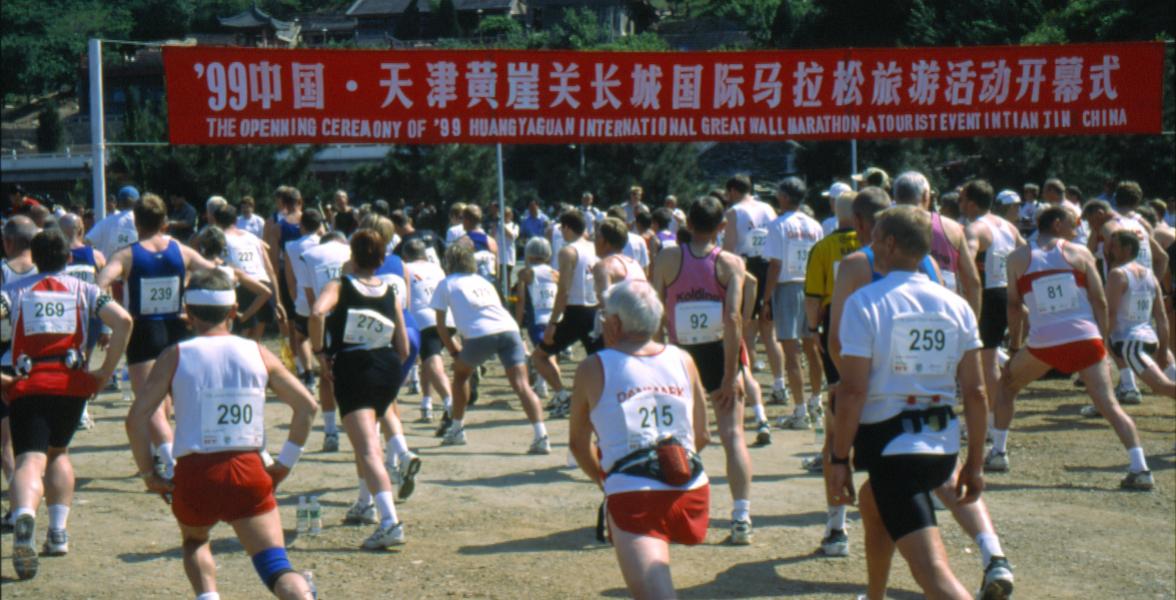
When was the first adventure marathon?
1999, it was only Danish runners. It was actually born because Albatros had lots of business from Danish tourists going to China. It was a very popular destination at that time and they were trying to think of new ways to get even more Danish people to go China and suddenly Søren (the founder of Albatros Travel) came up with this idea, they later invited the Danish director of athletics to help organize the first Great Wall Marathon. They travelled to China for the first time in 1998 to check out the different places on the Wall, and then the year after we had the first race. It was only Danish runners. I think there were almost 300 runners. Back then, they had never had so many Danish people in China at the same time. The Danish ambassador was there to inaugurate the race.
Were you there the first year?
No unfortunately not. It was Søren. He’s the kind of guy who has a lot of ideas, and if he has a good one, then he goes big. The second year they tried to make the Great Wall Marathon international, but we only had 99 runners. A lot of runners from the States, it started building up. Then it was cancelled in 2003 because of SARS and since then, it has taken place every year.
And how many people participate now?
Anywhere between 2000 and 2500.
What percentage of runners are Chinese and international?
50/50. Well that’s not entirely true because 50/50 includes runners living in China, but it could be US citizens living in China. So Chinese runners would be less, around 10-20% I think.
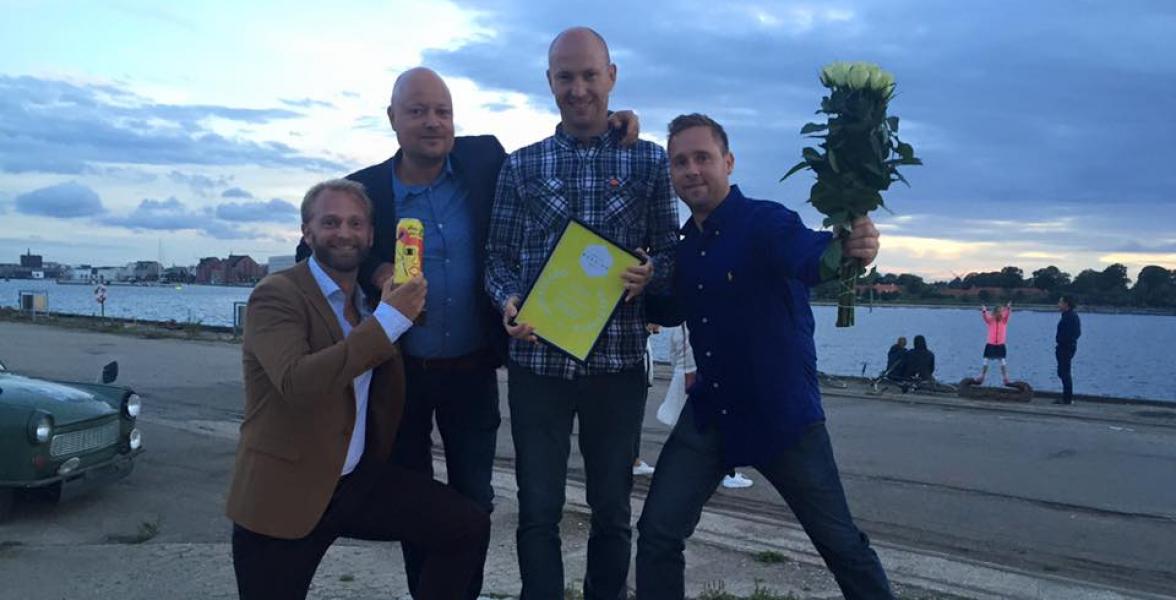
What were the first steps to setting up this branch within an already-established travel company?
Well as I mentioned, I wasn’t actually there for the first steps as I was still working with the normal tours back then. But since I took over in 2005, we had the Great Wall Marathon, starting the Big Five Marathon and we had the Polar Circle Marathon being a very small event with 30 runners or so. In 2007, my son was born and I needed someone else to help out and that’s when Lars (another race director) came in. Then Gitte (our customer service expert) joined us in 2011, before the Solar Eclipse marathon in 2012. We were a team of 3 for a while, but we’ve been growing ever since, now we are 10.
What is the biggest challenge you are currently faced with?
Well at the beginning it was rather easy to come up with an idea, and it was still rather easy to find destinations without an existing marathon. But now it’s difficult to find a destination that doesn’t have a marathon already, because the market has exploded. So, we were lucky we were kind of the first. Now we have a brand so if we go somewhere special, we have a big name behind us. We can show them this is what we do, that’s easier than coming as a travel agency from Denmark asking for a new marathon.
Also, there has to be some sort of twist to our races, and it’s very difficult finding a twist and a special place that isn’t taken. Now we have a brand, that makes it much easier. It’s changed from being easy for us to create novel events to being easier for us than other companies to create these events.
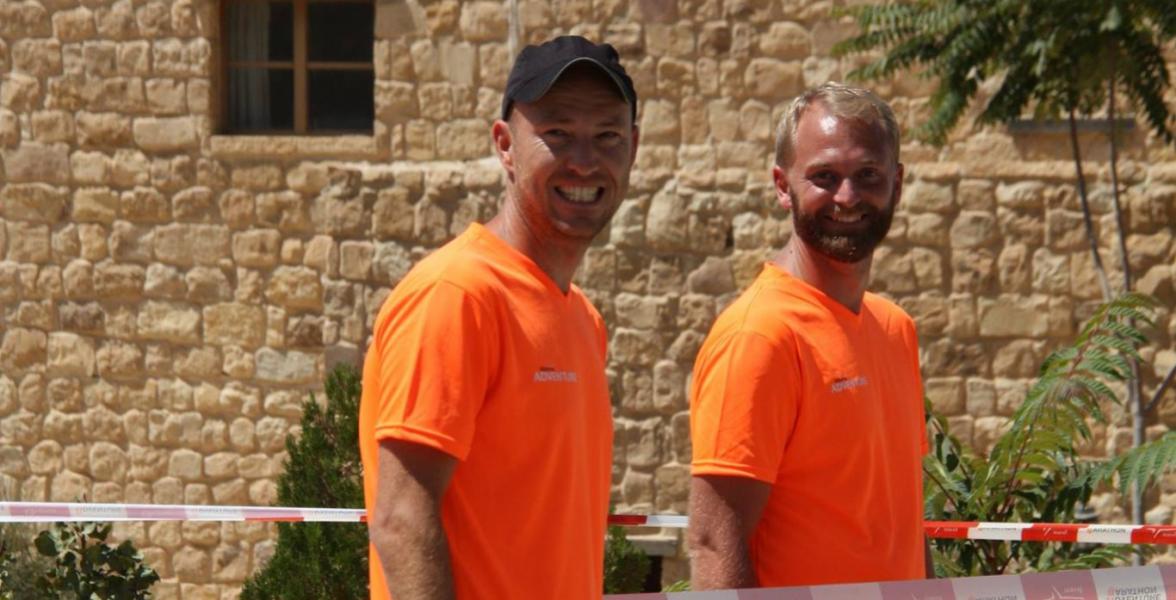
What is the biggest challenge when starting a new marathon?
The biggest challenge is actually to work with the local people because usually they have no clue what a marathon is. In Jordan when we were looking for the route, they didn’t understand that it had to be 42.195 km for a marathon. We just couldn’t solve the puzzle; we couldn’t close the route and they kept saying “but does it have to be that? Can’t it be 44 or 39 km? Does it matter?” and I had to explain that yes, it does matter. That is a marathon. That’s what we do, it has to be exactly that distance. And in Myanmar, the first year, they wanted to clean because it had to be clean for the marathon. They cleaned Bagan and the area and took down all of our markings because they didn’t know that it was for the marathon, so we were very busy that day. They were cleaning for our sake and just took all of it down. So, they don’t really know. In Bagan, they had never seen a race before, they had no clue. Runners come with certain expectations because they are international, they expect a certain level from us, and we live up to it but sometimes it’s really, really hard work. Especially the first years. So that’s the most difficult part. Then when you’ve been with them for some years, they understand, and it makes it easier for us.
So, you said the first marathon was the Great Wall? Then the Big Five?
No, actually the Polar Circle came in 2000, but it’s been cancelled a few times. Then we had a cruise marathon – running around on a cruise ship, I don’t even know how many laps.
Was that one successful?
Mmm… I think we did it once and the runners really enjoyed the cruise. Running a marathon on a cruise ship might be a story to tell but I don’t think the race itself was something special, and we didn’t do it again, so I wouldn’t call it a success. Then we also had a race in Nairobi, it was called Karen Blixen marathon you would finish at her house. We had a race where first you had to climb Kilimanjaro and then you ran a marathon down. Then the Big Five came along in 2005 and that one stuck, because it was so good and still is.
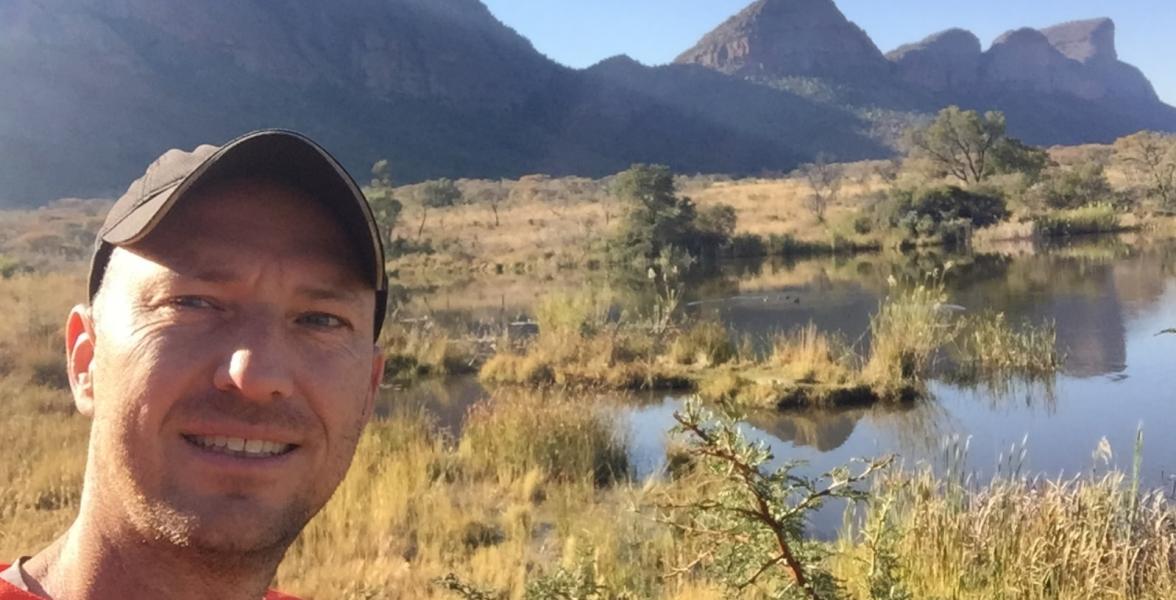
Yes, isn’t that the fastest one to sell out?
Yes, all the lodges that we have inside the camp, in the area where we have all the animals is sold out in 1 and a half hours so it’s very popular.
You said you struggle nowadays to find a place where a marathon doesn’t already exist, so how do you come up with new ones? And how do you decide whether it’s actually feasible?
Of course, a lot of people have many, many ideas and if they’re good enough, we investigate. Søren gets a lot of ideas, and Ilulissat was a good idea, and he kept saying we have to do it, so we did. We will have the first edition this summer. Greenland is very easy because we have our own business and a lot of people up there. The Bagan Temple Marathon in Myanmar was a coincidence. Michael, who is the producer for Myanmar, he was sitting in front of me at that stage, and he said how about making a marathon in Bagan. And I was like “where’s Bagan?” and he said, “in Myanmar,” and then he showed me on a map and some pictures of Bagan, and I was like “ok, this looks amazing.” So then we contacted our agent in Myanmar, and we checked it out, we always check if there’s a marathon already, and there wasn’t. We travelled out there and talked to the people, to see if it was possible at all. Then we flew back, suggested a route to them and flew out again. And then we had to negotiate with the ministers, so we had to meet the minister of tourism, minister of sports, and the minister of culture to get permission.
There seems to be a lot of interest in running the marathons without the package deals. Do you think this would ever be a possibility?
No, I don’t think so because we are a travel agency from the beginning, so this is what we do, this is our concept. In China, for example, there is demand as we are doing, it’s sport tourism, as they call it. Now it seems the concept works, and the people who buy the package love it, and they keep coming back. I can understand that people want to be able to just participate in the marathon, but we are a travel agency, and it makes sense if we go somewhere, like Bagan, that we not just pop-up, do the event and disappear again. That we actually know that we will leave business for the locals.
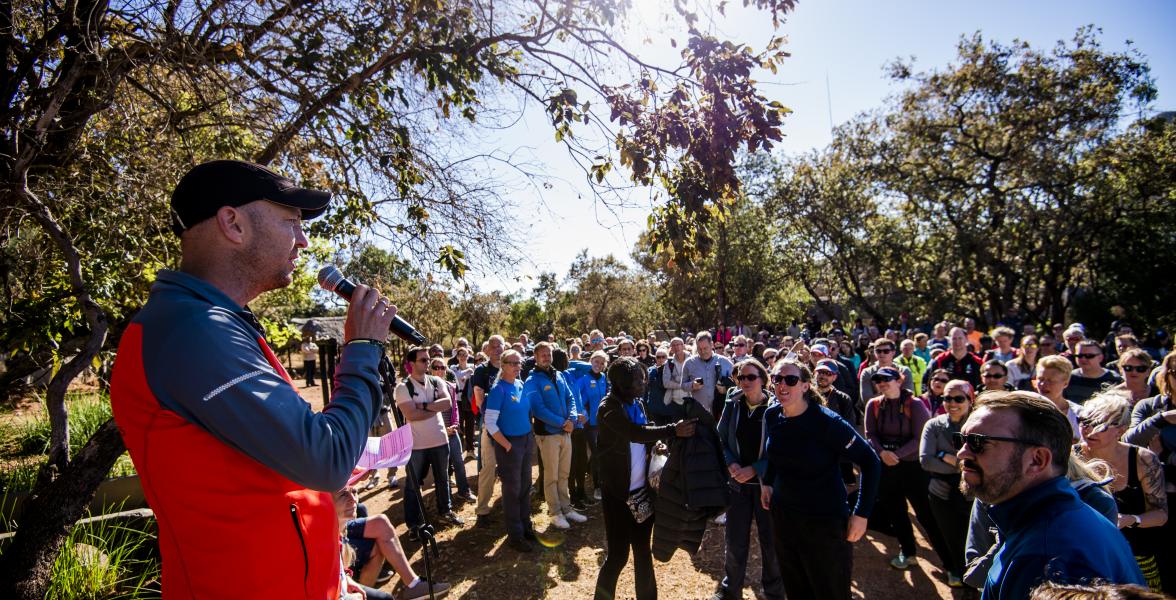
Do you run?
Yes!
Yes, a lot?
Mmm.. yes, sometimes. If I train for a marathon, I run a lot. I can still run faster than 3 hours so I have that as a goal, to keep running a marathon under 3 hours for as long as I can.
Can you run as fast as Anna? (Anna is our SoMe guru who also happens to be an elite runner. She participated in the 2016 Olympics in Rio.)
Nope. She can run a marathon in 2 hours 33 minutes, and I’m at 2 hours and 53 minutes. But 20 minutes, that’s a lot. Right now, I can run faster than her, because she’s pregnant. And actually, I have a faster 10 km time than her, because when we were looking for the world’s fastest marathon I was in Hawaii and I tested a volcano we were looking at there. I just tested running 10 km down the hill, and I ran 3 seconds faster than her fastest 10 km, but that’s only because I was running downhill, so it was cheating. She would beat me anytime, but she hates that I have that km time faster than her.
What marathons have you done?
My first two marathons were the Great Wall Marathon because I had to test it. Then I ran Berlin four times, Copenhagen twice, London, Chicago, New York, Frankfurt, then I ran an ultra in Cape Town called two oceans. That was a nice one. And also, in Bornholm, in Denmark, 60 km trail run, it was amazing. And now I hope to train for Amsterdam in October.
So how many in total?
Fourteen.
What’s your favorite marathon and why?
Usually Copenhagen Marathon is the same week as Great Wall Marathon, but then one year it wasn’t. That was my marathon number 10 or 11. I was well prepared, and I had the perfect race and my fastest time. In my eyes, Copenhagen marathon was not something special, but I was really surprised in a positive way, by the entire setup and the weather was perfect. Lots of spectators, and it was just the perfect race for me so I will always remember that as my best race and best experience because everything went well, from start to finish. So that’s kind of my favorite, and it’s a bit strange because if you’ve done New York, people say it’s the best, and it is a crazy race because Americans cheer better than everyone else. But Copenhagen is something special and New York number 2.
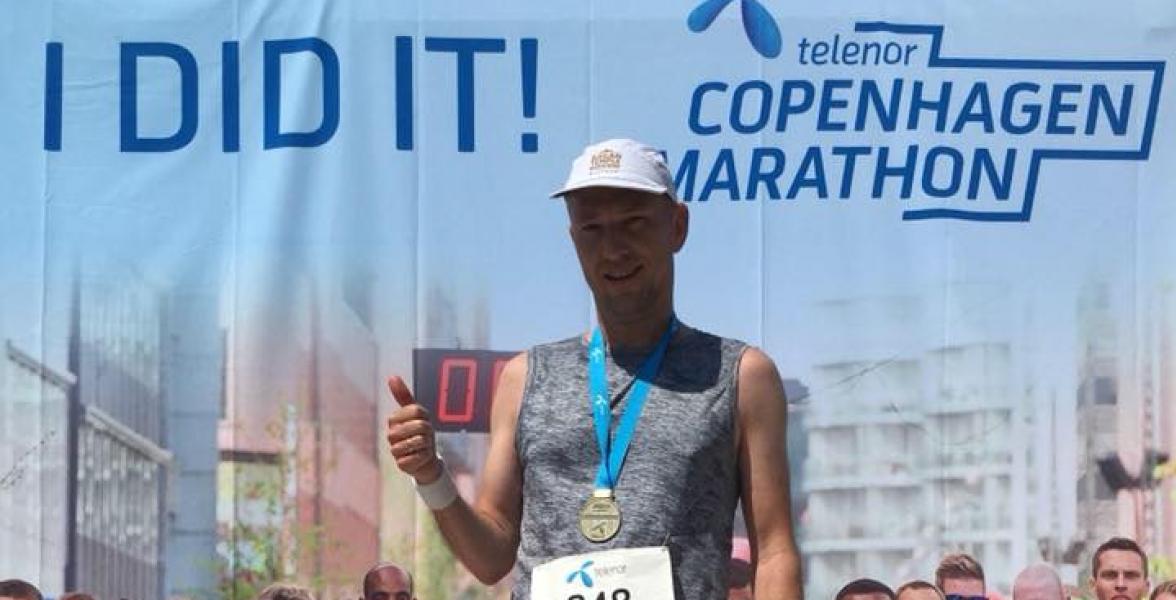
So, you next challenge is Amsterdam?
Yes, Amsterdam, just to try something different. Because when you’ve done Berlin four times, you know what to expect where and I just tried Frankfurt last year. When you don’t know the route, your focus is on the route as well, if you know the route you don’t have to focus. If it’s a new place, you forget to feel that you’re tired, you’re busy looking and enjoying the experience as well. So, I thought never do the same race twice.
I know Anna likes to go back to Frankfurt.
Yes, she convinced me to go. She’s tried Frankfurt and Rio during the Olympic Games, so I told her if you try Berlin, it would be crazy for you with that many spectators, and it is faster. There are a lot of Danish spectators in Berlin, there are like 5000 Danish runners so if you have the Danish flag you will be cheered all the way by the Danish people. Berlin is also nice, they are all my favorite, I like most of the races.
Have you done any other of our Albatros Adventure Marathon, apart from Great Wall Marathon?
No, that’s the only one because I wasn’t working with the marathons at that stage. Now I’m working with them, so it’s my responsibility to make sure everything flows.
Which one would you like to run if you had the chance?
Big Five. That’s my favorite race to organize and if I had to run it, as well. It has so many different factors. Its brutally hard, there is always something happening with hills, very steep hills, deep sand and then you have the twist with the animals. Even though I know it is safe, you always feel something if you run alone, and you hear something in the bush and you think to yourself “what’s that?”, it’s a nice twist, you never know what’s going to happen. Yes, I would definitely go for the Big Five.
I was asking Bo (another of our race directors) what his favorite marathon was, and he said it’s like asking a parent to pick their favorite child.
Yes exactly! And it’s really difficult because they are so different. They have so many different aspects, you have the ice in Greenland, the animals, the wall, the temples, and the local people in Myanmar are just amazing. So, running there, where no one else goes, is very special. We go to areas with no tourists at all which is rather rare these days.

